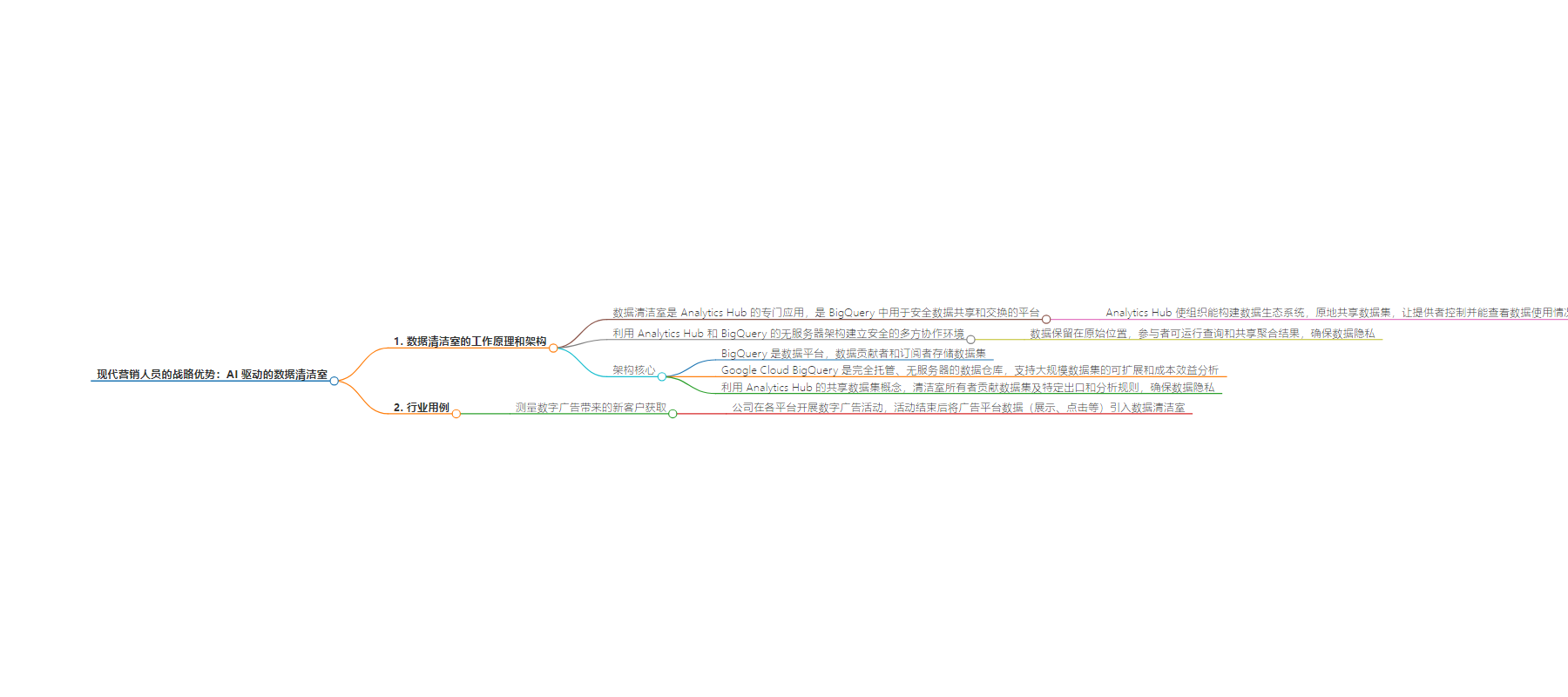包阅导读总结
1. 关键词:BigQuery、Data Clean Rooms、Analytics Hub、Multi-Party Collaboration、Data Privacy
2. 总结:本文介绍了 BigQuery 数据清洁室,它是 Analytics Hub 的一种特殊应用,基于 BigQuery 的服务器架构,能确保多方合作的数据安全和隐私。还提到其行业应用案例,如衡量数字广告带来的新客户获取情况。
3. 主要内容:
– BigQuery 数据清洁室
– 是 Analytics Hub 在 BigQuery 内用于安全数据共享和交换的平台的特殊应用。
– 依托 Analytics Hub 和 BigQuery 服务器架构,确保数据原地存储,保障数据隐私。
– 背后架构
– BigQuery 是数据平台,具有可扩展、成本效益高和分离计算存储等特点。
– 利用 Analytics Hub 的共享数据集概念,遵循特定规则确保数据隐私。
– 行业用例
– 如衡量数字广告的新客户获取。
思维导图:
文章来源:cloud.google.com
作者:Surya Kunju
发布时间:2024/8/26 0:00
语言:英文
总字数:1182字
预计阅读时间:5分钟
评分:87分
标签:数据密室,AI 驱动的分析,BigQuery,Google Cloud,数据隐私
以下为原文内容
本内容来源于用户推荐转载,旨在分享知识与观点,如有侵权请联系删除 联系邮箱 media@ilingban.com
How it works and its architecture
BigQuery data clean rooms is a specialized application of Analytics Hub, a platform within BigQuery for secure data sharing and exchange. Analytics Hub enables organizations to build a data ecosystem where datasets are shared in-place, granting providers control and visibility into data usage.
Leveraging Analytics Hub and BigQuery’s serverless architecture, BigQuery data clean rooms establish a secure environment for multi-party collaboration. Data remains in its original location, allowing participants to run queries and share aggregated results, ensuring data privacy.
Behind the scenes: the architecture
At its core, BigQuery serves as the data platform where data contributors and subscribers store their datasets. Google Cloud BigQuery is a fully managed, serverless data warehouse that enables scalable and cost-effective analysis of massive datasets. It stands out for its decoupled architecture, separating compute and storage, allowing independent scaling for optimal performance and cost efficiency.
It leverages the concept of shared datasets from Analytics Hub, allowing the clean room owner to contribute their dataset along with specific egress and analysis rules. These rules dictate what kind of outputs are permissible from the clean room, ensuring data privacy. You can refer to the Google Cloud Documentation for a detailed understanding of the architecture.
Industry use cases
Data clean rooms are transforming businesses across industries. Let’s look at a few use cases.
Use case 1: measuring new customer acquisition from digital advertising
A company runs a digital advertising campaign across various platforms to attract new customers or re-engage lapsed ones. Once the campaign concludes, the ad platform data (impressions, clicks, etc.) is brought into a data clean room.
